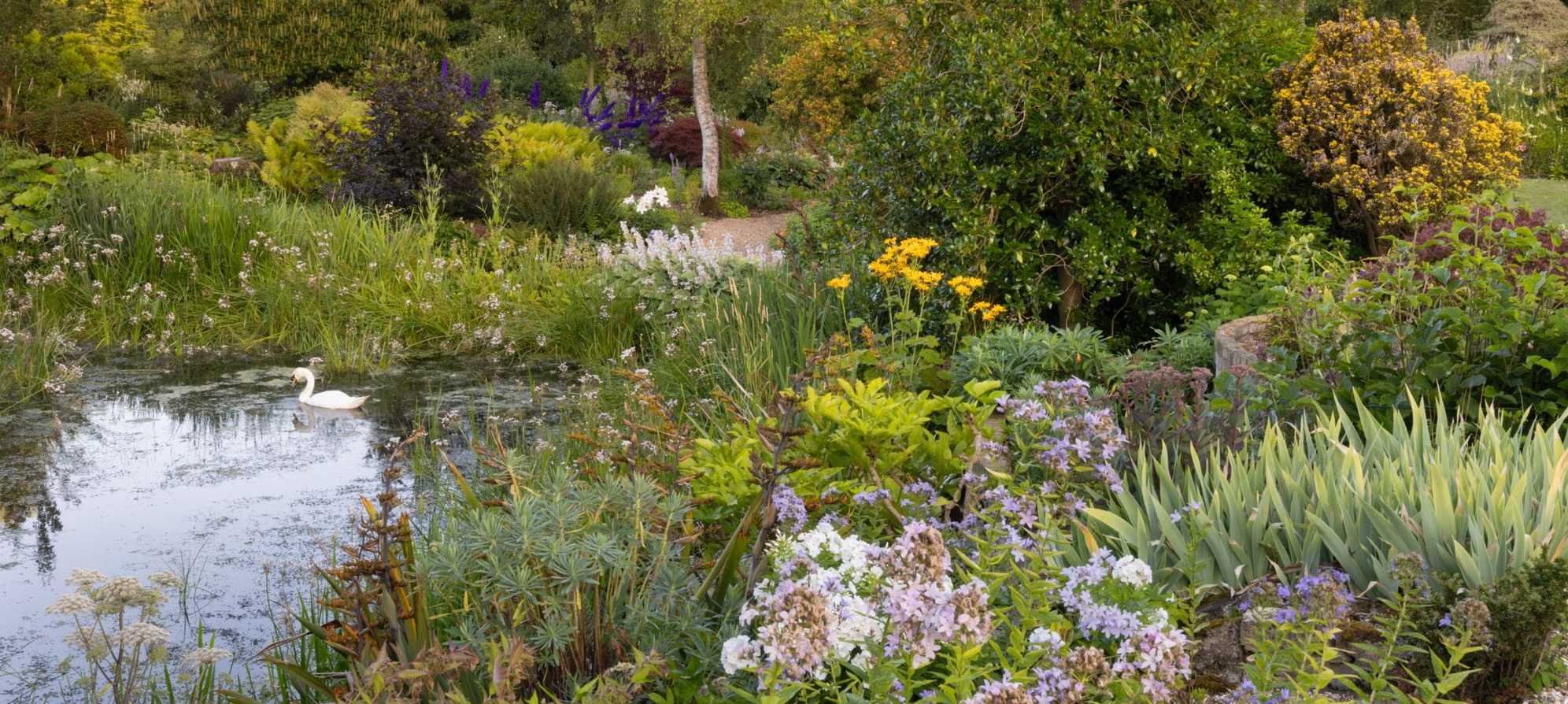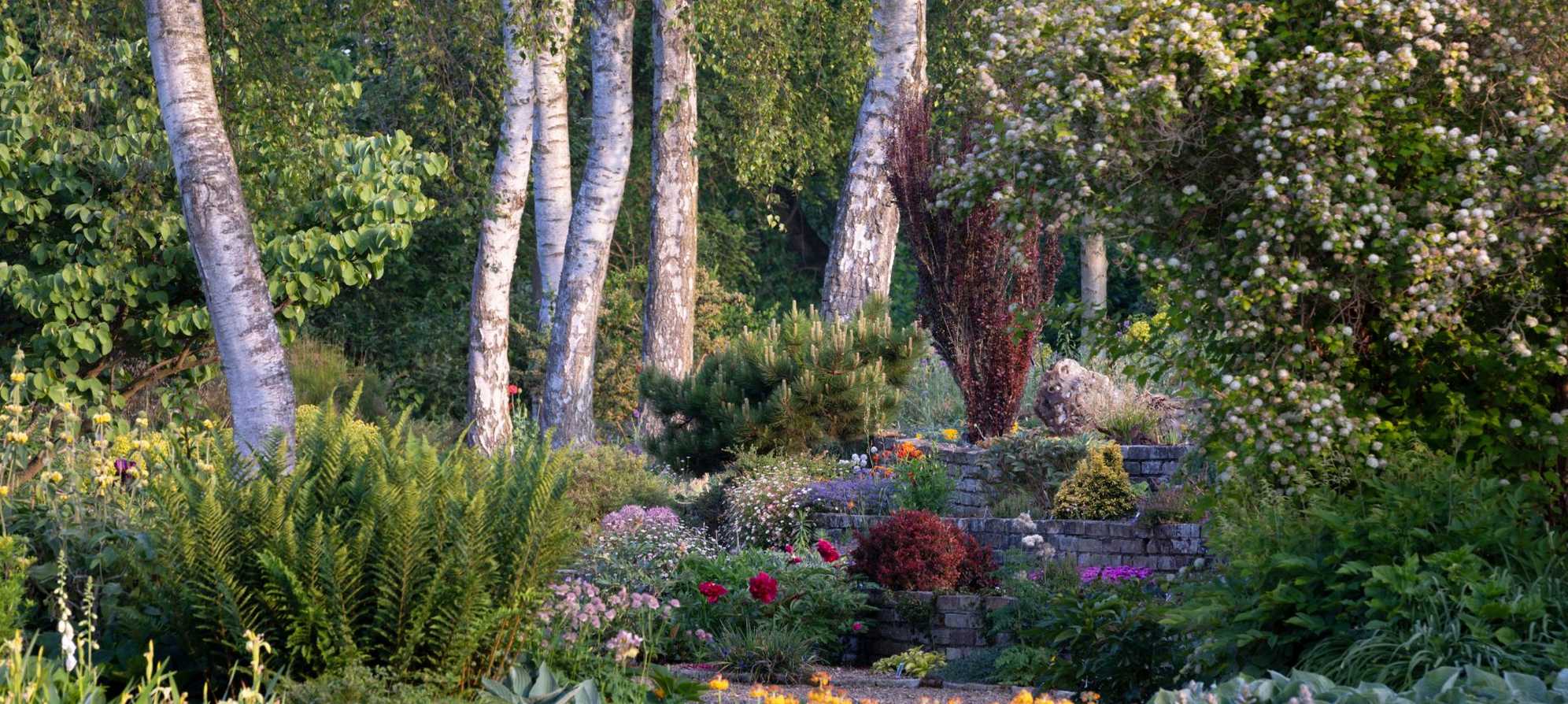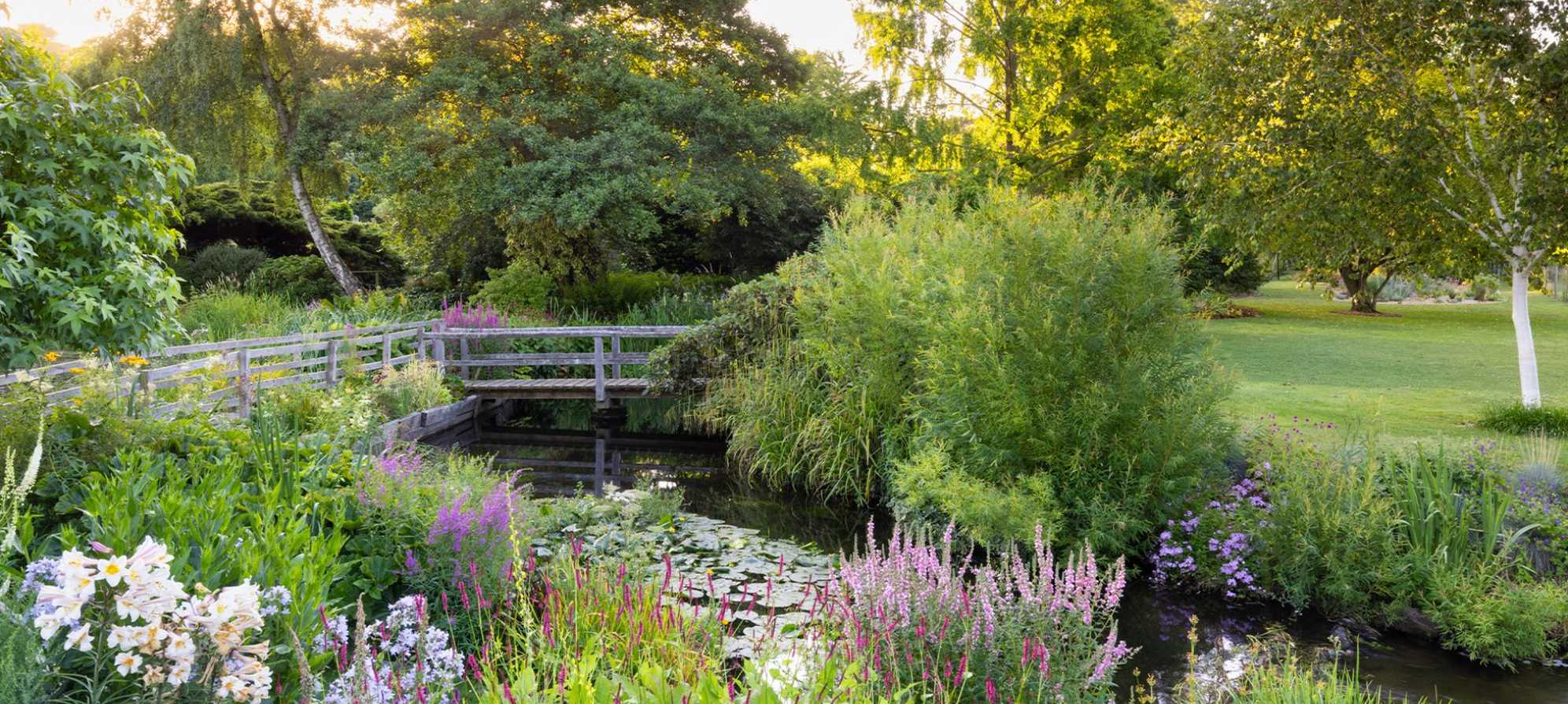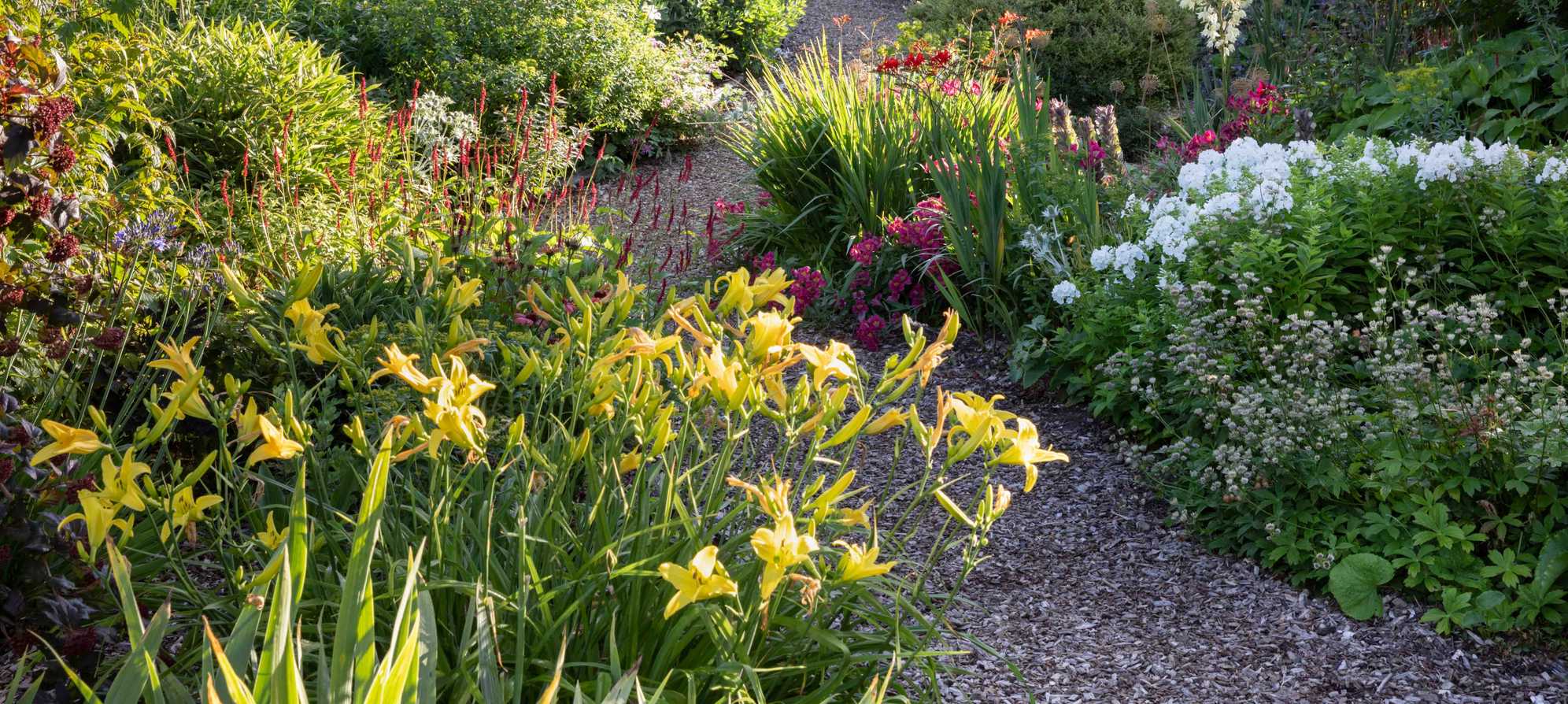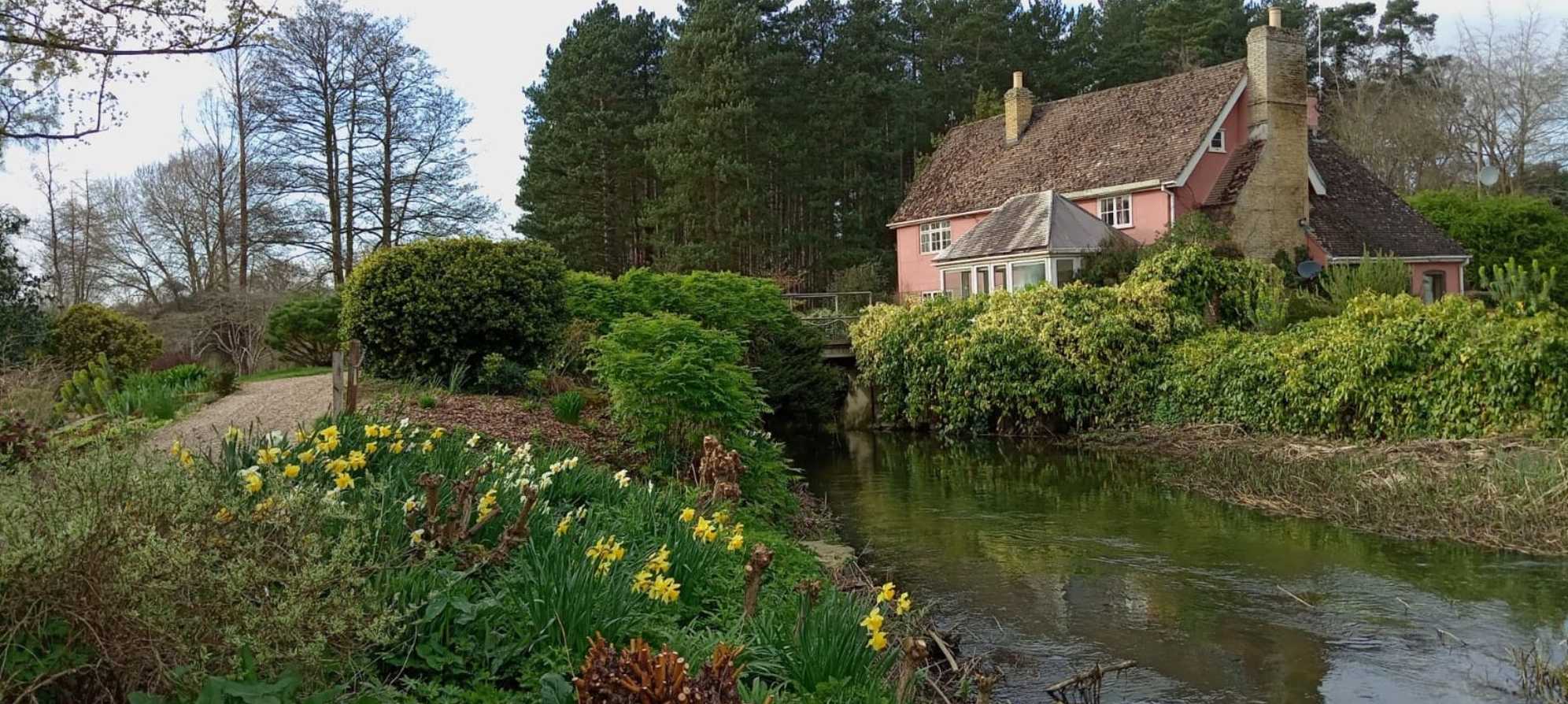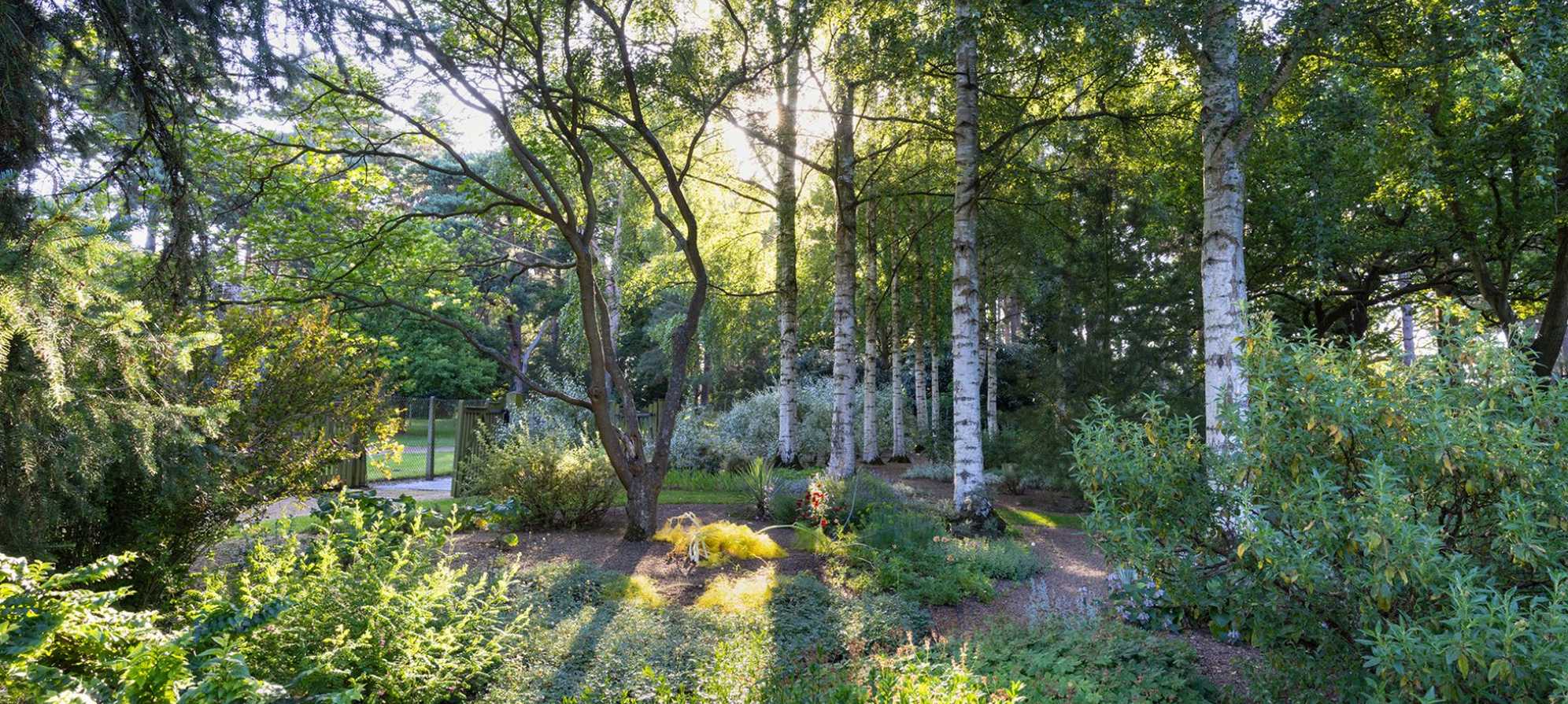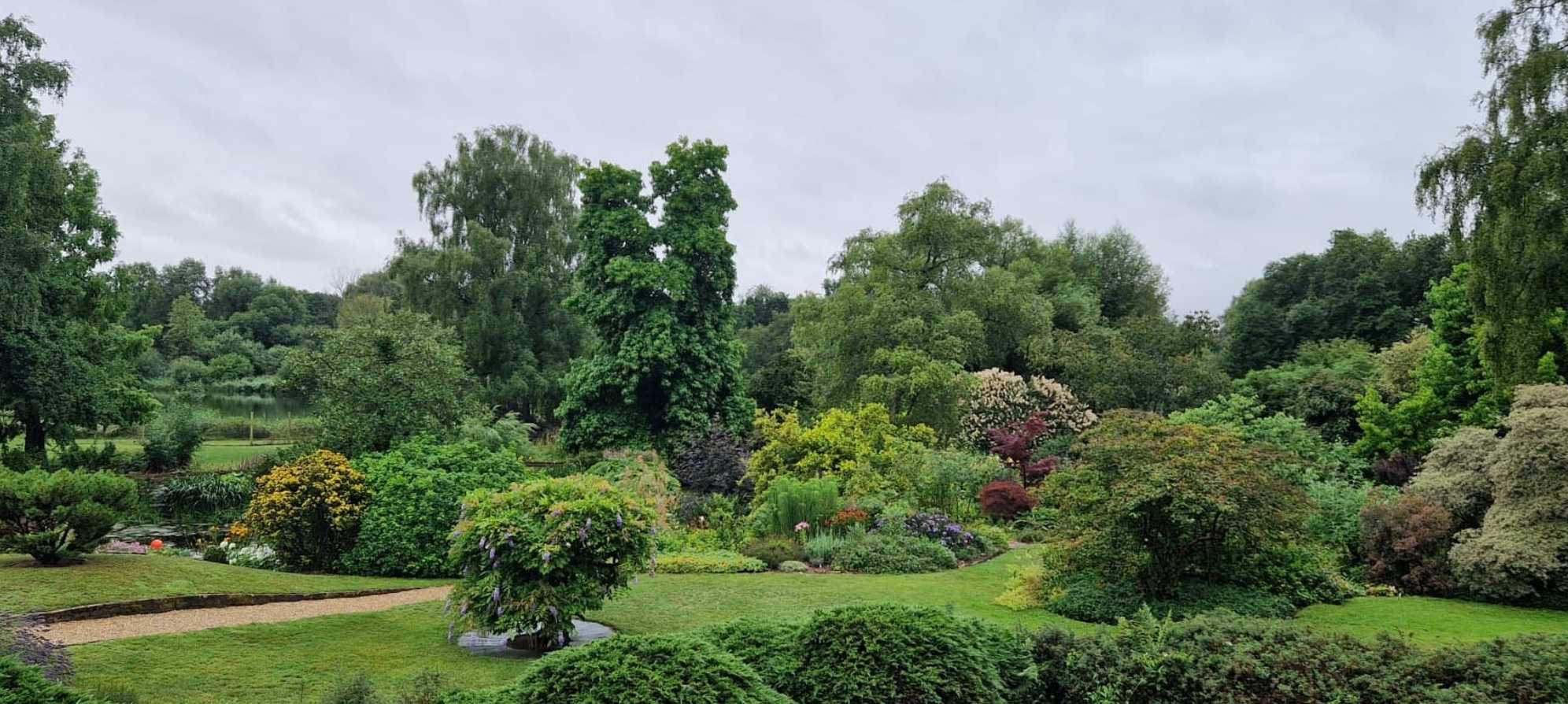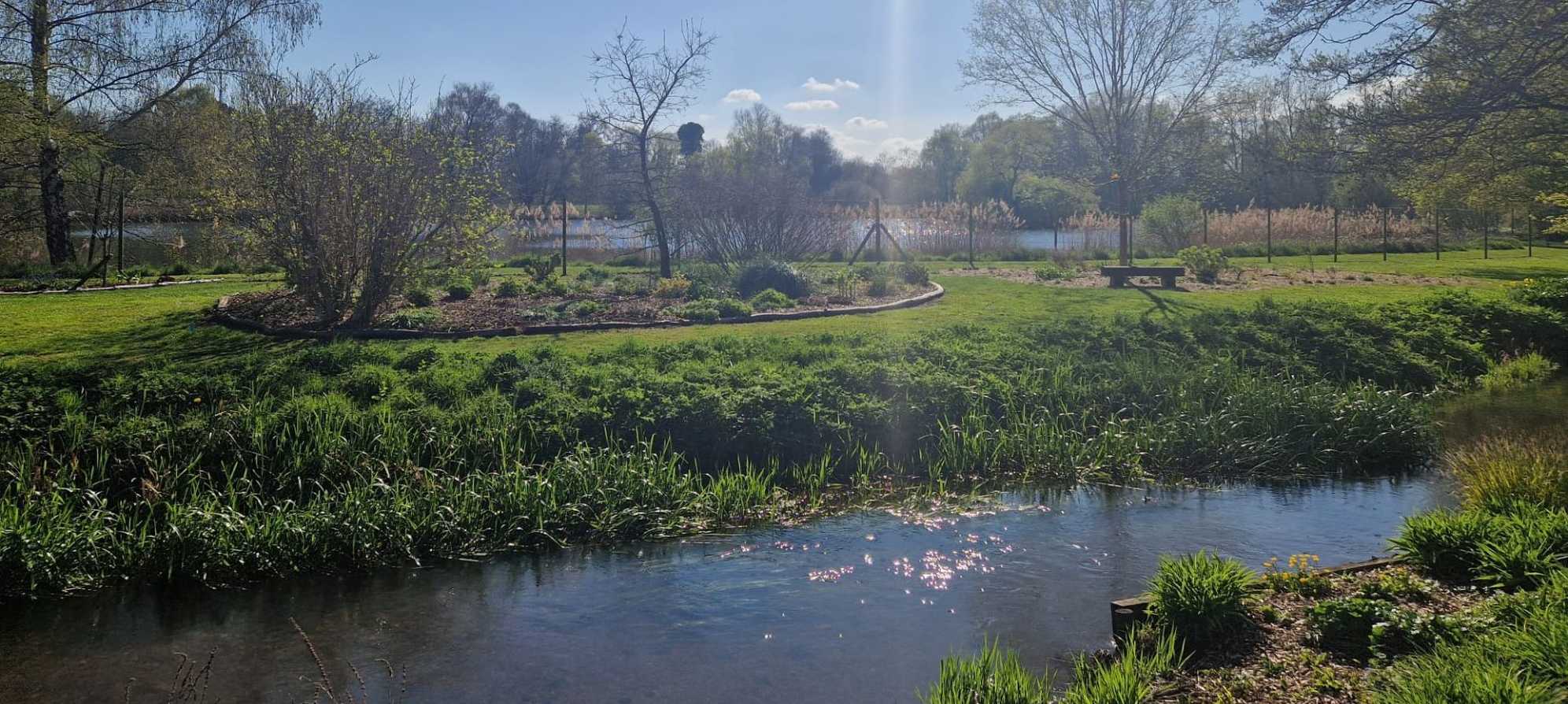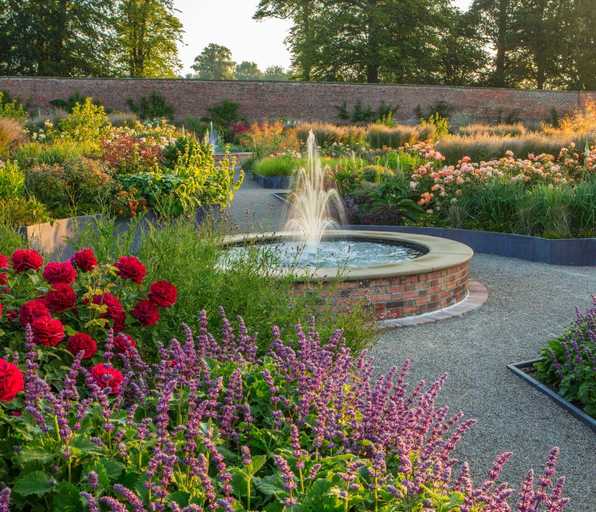

Fullers Mill Garden
Fullers Mill is a tranquil waterside and woodland plantsman’s paradise.
Fullers Mill Garden is a tranquil waterside and woodland plantsman’s paradise.
Fullers Mill is an enchanting and tranquil seven-acre creation on the banks of the River Lark. It combines a beautiful site of light dappled woodland with a plantsman’s collection of unusual shrubs, perennials, lilies and marginal plants. It is a garden of truly year-round interest. The garden was created by the late Bernard Tickner MBE (1924-2017). He moved to Fullers Mill in 1958 and spent over 50 years creating the garden you see today from rough scrub and woodland.
In 2004, Bernard and his wife Bess donated the garden to The Fullers Mill Trust, a registered charity, which was established to manage the garden and to ensure its future. In 2013, the garden was gifted to Perennial, for its long-term preservation. Our team of gardeners and volunteers now maintain the garden for the enjoyment of visitors from April to October.
Admission price
- Adult: £10.00
- Adult with Gift Aid: £12.50
- Adult with Perennial membership: Free
- RHS members (Wednesdays): Free
- Child (under 5): Free
- Child (5 - 16 years): £4.00
Opening times today
- Garden: 11:00 to 17:00
- Shop: 11:00 to 17:00
- Plant Sales: 11:00 to 17:00
- Tea Room: 11:00 to 16:30
Getting here
- Fullers Mill Garden
Bury St Edmunds
Suffolk
IP28 6HD
National Garden Scheme Open Day (5 October): As we are raising money for the National Garden Scheme on these days, all visitors will be charged the full admission price (including those with Friends of Perennial membership).
Fullers Mill Garden is open for the main season from April to October on Wednesdays, Fridays, Saturdays and Sundays.
RHS Members are required to bring a valid membership card showing the date. Members who have signed up within the previous month must show their sign up email.
Assistance Dogs: To help us preserve its charm, the garden only allows assistance dogs. We are sorry we can’t admit family dogs or other pets.
Groups (6+) are welcome by prior arrangement.
Plan your trip to Fullers Mill Garden
VISIT ESSENTIALS
Opening times for
Loading...
Assistance Dogs: To help us preserve its charm, the garden only allows assistance dogs. We are sorry we can’t admit family dogs or other pets.
Groups (6+) are welcome by prior arrangement: please email fullersmillgarden@perennial.org.uk to discuss your visit.
Loading...
Open
Partially Open
Closed
Facilities
- Refreshments
Our Bothy Tea Room serves a range of teas, coffees, cakes and ice creams.
Please ask our staff should you have dietary requirements.
- Gift Shop
We stock a large range of contemporary giftware, cards, stationery and gifts for gardeners, including our range of Fullers Mill inspired gifts.
You can also shop our full range of hundreds of cards and gifts in our online shop.
- Plants Sales
Plants are available for sale in the plant sales area, including some which have been propagated from the garden.
- Limited On Site Parking
Parking is adjacent to the garden, with accessible parking spaces available
- Toilets
Toilet facilities are located behind the tea room and shop
- Baby Changing
Baby changing facilities are available in our accessible toilet
- Accessible Toilet
Accessible toilet facilities are located behind the tea room and shop
Accessibility
Fullers Mill garden’s uneven surfaces, grassed areas, proximity to water and sloping ground limit disabled access to some areas. Disabled toilet and Bothy Tea Room are fully accessible.
- Wheelchair Access
Please be advised the garden can be difficult for visitors who are solely reliant on a wheelchair - please see above for specific garden details.
The companion of a disabled visitor is admitted free of charge. - Assistance Dogs
To help us preserve its charm, the garden only allows assistance dogs.
We are sorry we can’t admit family dogs or other pets.
Eating
- Bothy Tea Room
Tea, coffee and delicious cakes are available to purchase from our serving area and enjoyed on the lawn or under the covered seating area in the garden.
We’re sorry, but picnics are not permitted in the garden, however we’re surrounded by the beautiful Kings Forest where your picnic can be enjoyed.
- Opening times
Wednesday
11:00 - 16:30Friday to Sunday
11:00 - 16:30
Shopping
Once you’ve toured the garden, don't forget to visit our lovely plant sales area and fabulous gift shop stocked with seasonal cards, stationery and gifts.
-
Gift shop
The perfect place to find something special including gifts for the home and garden. We stock a large range of contemporary giftware, cards, stationery and gifts for gardeners, including our range of Fullers Mill inspired gifts.
-
Plant sales
Plants are available for sale in the plant sales area, including some which have been propagated from the garden.
-
Online shop
You can also shop our full range of hundreds of cards and gifts in our online shop.

Our team
This National Apprenticeship Week we are delighted to celebrate not just our current trainees at Fullers Mill Garden, but previous ones too.
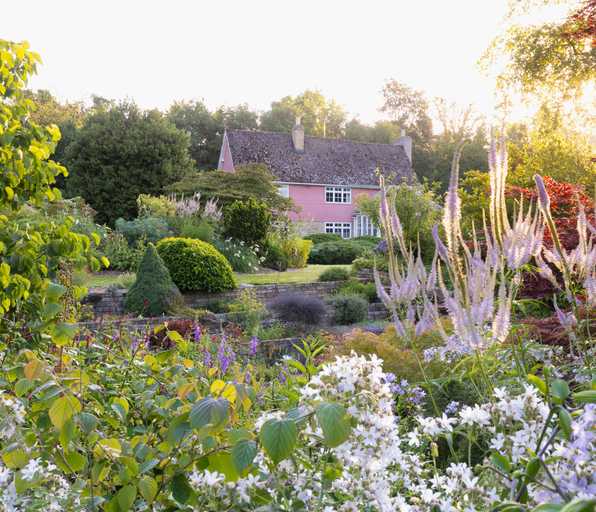
The history of Fullers Mill
Enjoy a brief look through the history of Fullers Mill. From Fullers Mill Cottage to the Fulling Mill and more.

Volunteer at Fullers Mill
When you volunteer, you’ll join a group of wonderful people who want to make a difference in the world.
How to travel to Fullers Mill Garden

Address
West Stow
Bury St Edmunds
Suffolk
IP28 6HD
Driving
Fullers Mill Garden is 5 miles north-west of Bury St Edmunds in Suffolk. Turn off the A1101 (Bury to Mildenhall road) signposted West Stow Anglo Saxon Village. Continue for 1.5 miles and the entrance is clearly marked. Limited parking is available on site.
Public Transport
Accessing Fullers Mill Garden by public transport is encouraged for those who also don't mind a bit of walking.
From Bury St Edmunds Bus Station:
- Bus 16 (towards Newmarket) alight at Church, then walk for approx. 40 minutes.
- Bus 355 (towards Mildenhall) alight at Church, then walk for approx. 40 minutes.
- Bus16A (towards Mildenhall) alight at Telephone Box, then walk for approx. 15 minutes.
Events at Fullers Mill Garden

Summer Photography Workshop with Phil Morley
We're delighted to welcome local professional photographer, Phil Morley, back to Fullers Mill this year for fabulous photography workshops.
Fullers Mill Garden, Bury St Edmunds, Suffolk, IP28 6HD
- 20th July 2025
- 08:00 - 11:00
- SOLD OUT

Watercolour Course at Fullers Mill
Join SBA Fellow, Reinhild Raistrick on this two day botanical illustrations workshop
Fullers Mill Garden, Bury St Edmunds, Suffolk, IP28 6HD
- 1st September 2025- 2nd September 2025
- 10:00 - 16:00
- £110

Autumn Photography Workshop with Phil Morley
We're delighted to welcome local professional photographer, Phil Morley, back to Fullers Mill this year for fabulous photography workshops.
Fullers Mill Garden, Bury St Edmunds, Suffolk, IP28 6HD
- 14th September 2025
- 08:00 - 11:00
- £20
Become a Friend of Perennial for unlimited visits
Joining us as a member means your kindness and generosity not only has a profound impact on people’s lives, it also means the UK’s gardens, parks, landscapes and sports grounds are secure and cared for now and into the future.


Perennial's other gardens
Our gardens have been generously gifted to us by special supporters. By sharing their most treasured places, we can tend to the UK’s horticulture industry. When you visit, you’re not just enjoying the scenery, you’re part of a lifeline. The funds we raise through our gardens help us to build better futures for people in horticulture and their families.
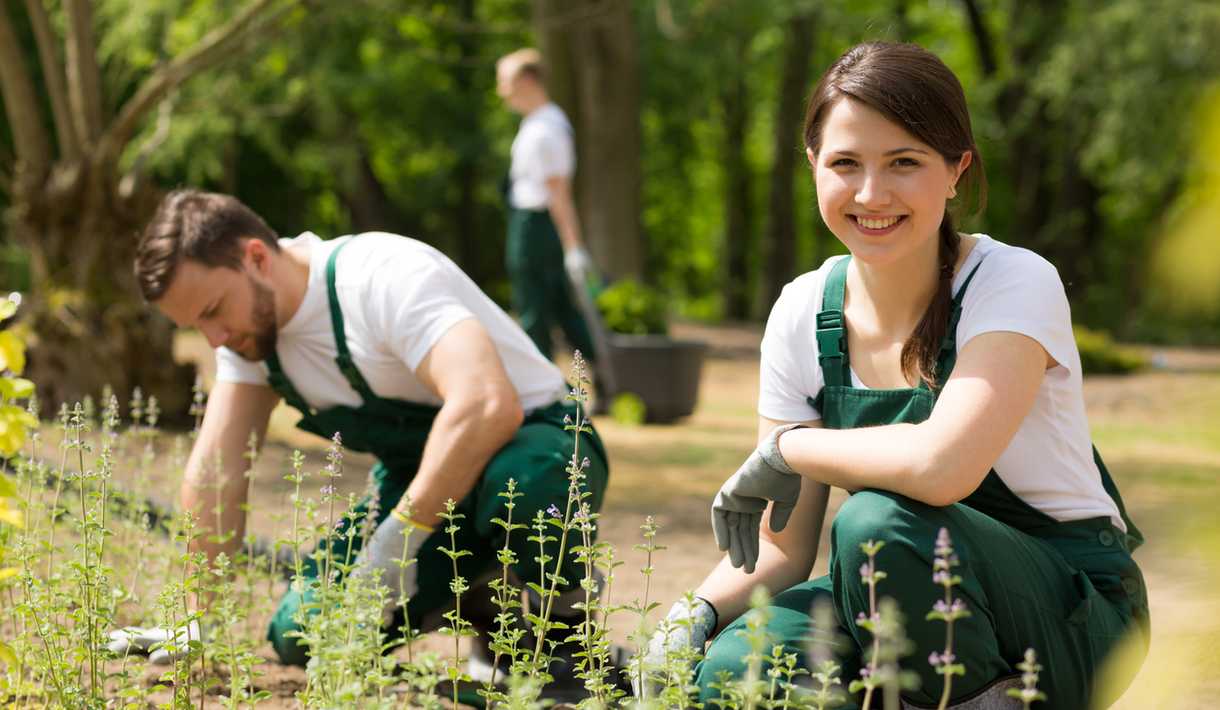
Ways we help
Perennial is the UK’s only charity supporting all those working with plants, trees, flowers or grass, as well as those who have retired, who dedicate their passion, time and energy to keeping Britain beautiful.
Find out more


